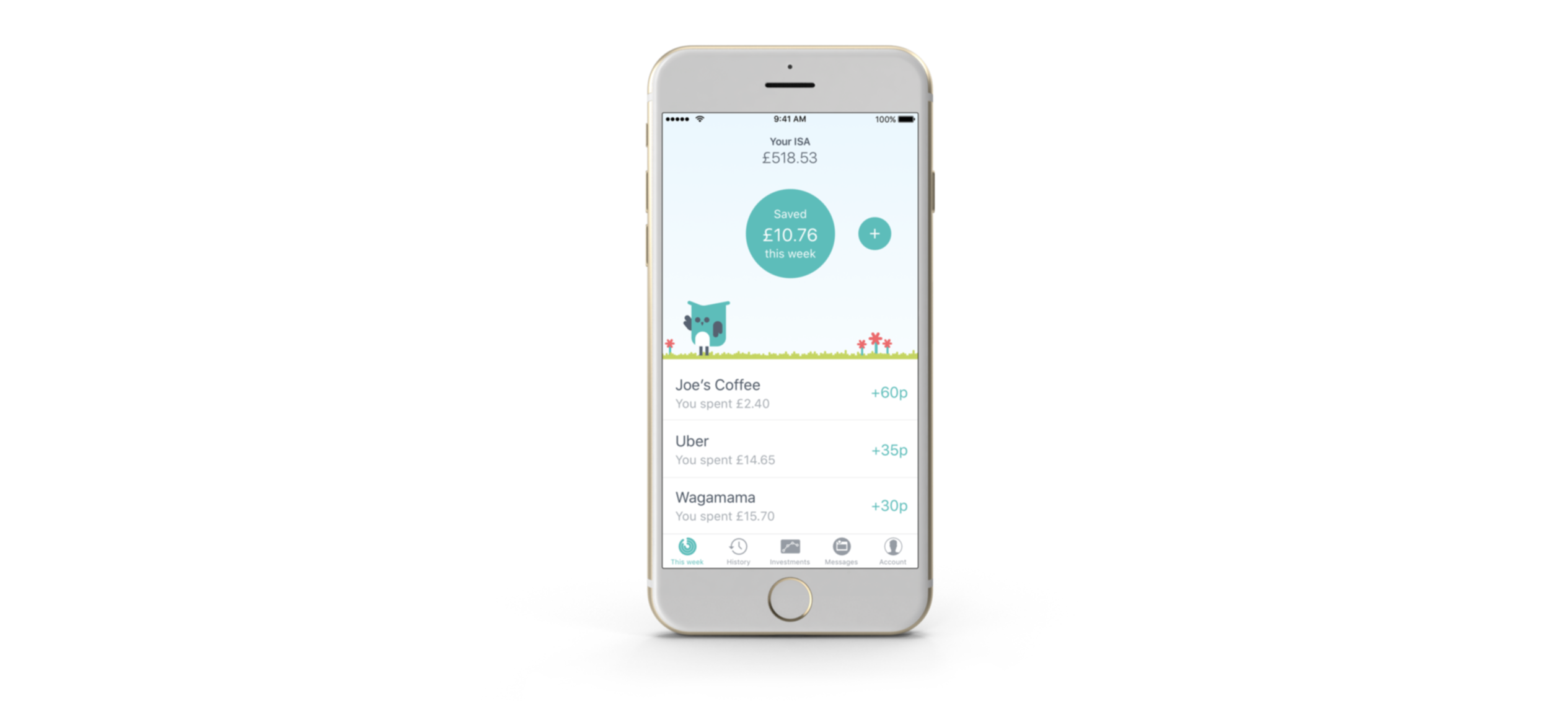
Earlier this year, the Australian property developer Tim Gurner found himself in hot water when he suggested that the main reason millennials struggled to get on the property ladder was not the legacy of a global financial crisis, crippling student debt or even the astronomical price of housing, but their indulgent eating habits. Gurner scoffed: “When I was trying to buy my first home, I wasn’t buying smashed avocado for $19.”
While a quick calculation exposes Gurner’s comments as not just crass but hopelessly inaccurate – it would take over 120 years of missed brunches to save for a house in Melbourne at today’s prices – it is true that spending habits are a force to be reckoned with. Moneybox is a new app designed to digitise the skill of saving, and to demystify the stock market. In an increasingly cashless economy, it allows users to invest their “spare change” by making small, automatic payments into a stocks and shares ISA. The app is linked to an online bank account and rounds card payments up to the nearest pound. So, if the user spends £2.40 on a coffee the app will direct 60p into the ISA, which is then invested in one of three tracker funds – cautious, balanced or adventurous.
This technologically driven micro-investing is aimed squarely at young people who lack the experience or motivation to plan their finances. “Everyone in the world is saving towards something,” says Moneybox co-founder Ben Stanway, “but the reality is that not everyone knows how to do it effectively. It’s very easy to put off saving. We’ve reduced the barriers to trial and giving it a go. We’ve broken the inertia.”
Are millennials really incapable of saving off their own back? Surely, the most logical solution to overspending on coffee would be to buy a cafetiere? Charlotte Oates, Moneybox’s marketing manager, says: “Millennials have a pretty raw deal. It’s easy to say that you intend to save or cut costs; it’s harder to actually enact the behaviour to do it. We’d like to move away from the finger wagging and warning young people they need to stay in and just eat beans on toast.”
The app also aims to make investing in stocks and shares easy for people who are time-poor or disinterested. Stanway, who spent eight years working for the hedge fund Habrock Capital and just over a year at Fidelity Investments, says he wanted to avoid presenting novice investors with “a paradox of choice”. He continues: “Each option contains a mix of three tracker funds: a Vanguard global equities fund, a Henderson cash fund and a BlackRock property equities fund. While the risks of investing still obviously exist, a lot of city fund managers don’t actually beat tracker funds. So it can be better to drip-feed money into a very low-cost but diverse tracker fund.”
Any app that requests access to its users’ bank accounts must inspire confidence. Oates says that Moneybox is authorised by the Financial Conduct Authority (FCA), and that the app makes “a secure connection with your financial institution, on a read-only basis”. Furthermore, the Moneybox app only allows users to view their transaction history and the money they have saved using the service’s “round ups”. The company, Oates says, is never itself able to access the user’s account. “Moneybox doesn’t access or store your online banking login details. This is done through a partnership with [payment services company] Yodlee. When you enter your online banking details, Yodlee communicates with your bank and specifically excludes account or card numbers to further reduce risk. Login details are encrypted.”
As well as investing their spare change, Moneybox users can set up weekly savings and make one-off deposits. If funds are sold, users receive their returns within three days. But convenience and behavioural change will come at a cost – a subscription charge of £1 per month and a platform charge of 0.45 per cent per year, compared to 0.25 per cent for many other ISAs. So how much do people need to invest in Moneybox to make it worth it? Stanway suggests that the average Moneybox user, using only the round up option saves “around £600 per year” but points out that “our average customer has been saving around £600 per month with weeklies and one-off payments”. When asked if this really represents a millennial savings pattern, he elaborates that “Moneybox is for people who have an income that’s greater than their costs. The age of our average customer is 31. People need a period of time after school or university to pay off their debts.” Oates chips in: “Our direct audience is someone who has money set aside already and thinks they should do something with it.”
The financial journalist Jean Chatzky wrote in 2009: “Put all of your savings on autopilot and you won’t likely notice the missing cash.” With the aim to automate already established in other aspects of human life, from transport to manufacturing, finance is following suit. Companies such as Nutmeg have already made saving smarter, but behaviourally-focussed ideas such as Moneybox could form the next generation of automatic investment.





